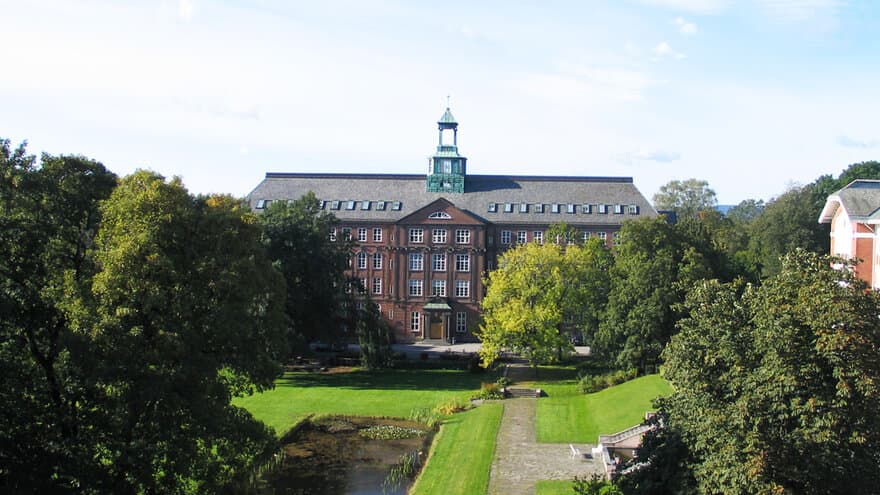In 1919, plans and costs estimates for an additional educational building were presented in the Parliament. The building was intended to relieve Urbygningen. The plans underwent several revisions and in 1920 after approval, construction of Tårnbygningen (The Tower Building) began.
The construction period was prolonged, and the building was not completed until 1924/1925. It is uncertain whether there was a high price level during the construction period and a practice of postponing public development in such periods. Or if it was the change of plans to increase the number of floors from three to four, which delayed the construction.
The idea behind the expansion was to accommodate the university’s library, which was previously intended to have its own building. Tårnbygningen is situated in such a way that it stands out as the completion of the university complex that Ole Sverre created at the turn of the century. Outdoors, especially when viewed from the west and south, the building is majestic and imposing. And from almost all directions, the tower spire serves as a prominent landmark.
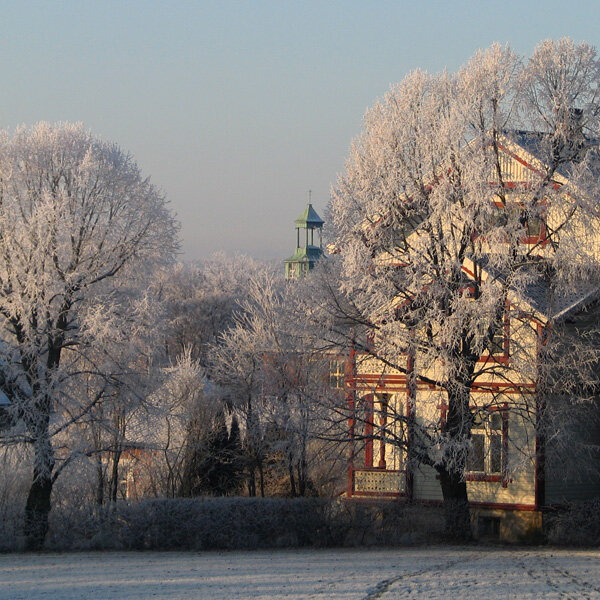
Together with Urbygningen, Cirkus, and Parkbygningen (Park Building), Tårnbygningen (Tower Building) defines a horseshoe-shaped space with the entrance of Urbygningen at its central axis. This park space, along with the corresponding spaces between Circus, Tivoli, and Økonomibygningen, creates an inspiring variation on the same architectural theme.
The facade of Tårnbygningen was rehabilitated in 2023/2024.
The facade of Tårnbygningen
With one significant exception, the building plan closely resemble those of Cirkus and Urbygningen. The exceptions being the wings, which are absent in Tårnbygningen. The common denominator is the elongated floor plan with the main entrance emphasized in the central section, longitudinal corridors, and a staircase at each end. Unlike the other buildings, the traffic axis is not based on stairs but on freight and passenger elevators."
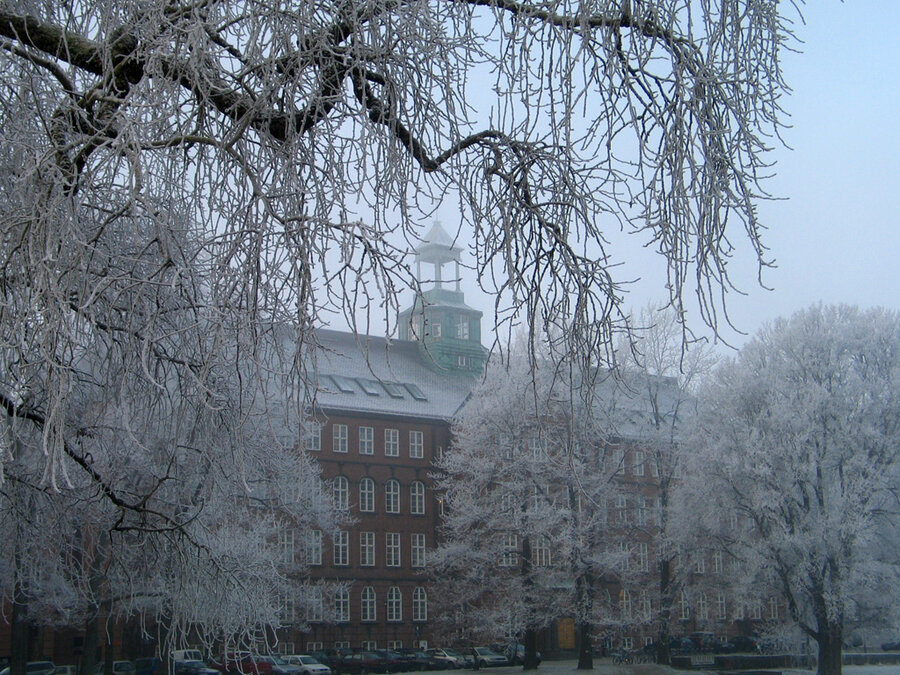
The building is 72.18 meters long and 17.58 meters wide with an extension in the middle to 22.83 meters. It has a concrete foundation and stands on a concrete base. The rest of the building is made of brick and the roof is covered with slate. The building was built with hot water as central heating, with water closets on each floor and electric light everywhere.
The building body is closed and tight and has a steep, hipped roof where the ridge line is emphasized by a raised “back” that houses a ventilation duct. The central risalites and the protruding stairwells in the short walls underline the building’s massive weight rather than weaken it. In contrast to this, the roof rider/tower rises transparently and with light elegance.
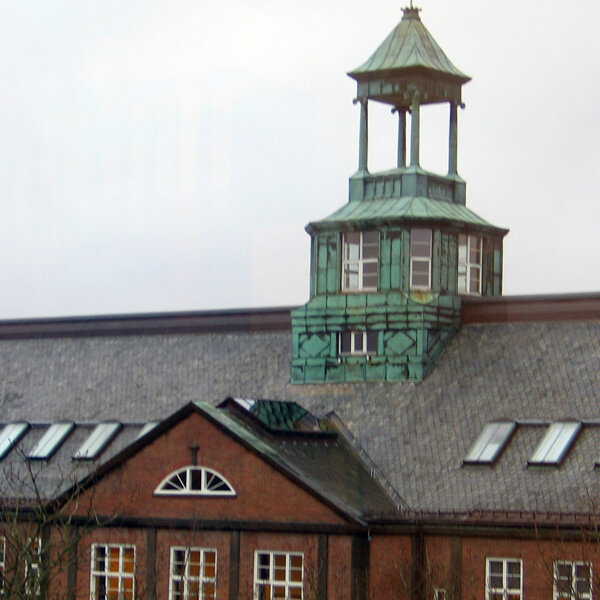
There is hardly any doubt that from the architect’s side it was intended to give the building a certain character of classical dignity and peace. This is in contrast to the more loose form and material joy of the neo-renaissance that one finds in the neighboring buildings.
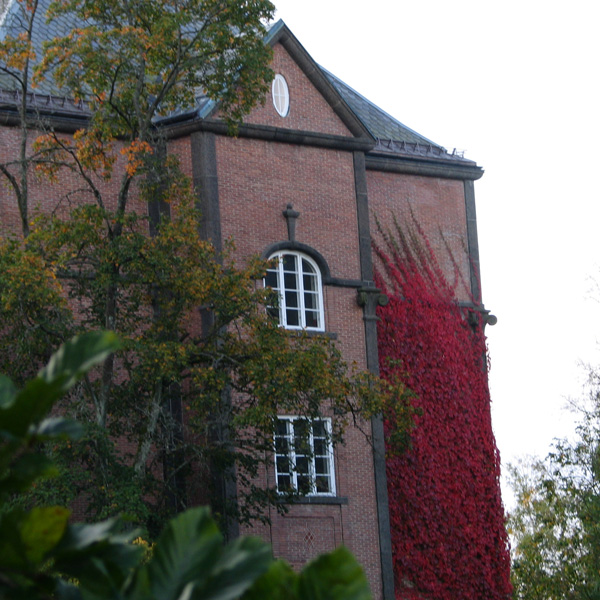
The classic style is expressed in the facade structure and materials, but we also find a discreet variation of materials and forms that swing from the classic to the almost whimsical.
The main material is roughly jointed masonry in red brick. It is laid in “workformat” (three shifts per 20 cm height). Bands and other decorative elements in the facades are made of rough-hammered, dark gray larvikite (Larviksyenite). The roof rider and the ridge comb are clad with copper, as is the small roof surface above the entrance portal.
The strong white marking of frames in the windows is probably not original. From older pictures, one can see that the glass surfaces in the windows have played a more independent role. They are not separated from the brick surfaces with strong contrasts. On the other hand, it can be argued that the contrast gives the buildings a certain connection to the neo-renaissance buildings around.
The facade of the building is divided into horizontal parts by means of larvikite bands between the first and second floor and the third and fourth floor. At the corners, there are vertical powerful pilasters in larvikite from bottom to top. These have a base with an indication of console bearing at the lower band and end in marked capitals at the upper band. In the central risalite at the main entrance, there are also vertical bands between each window row. The system with bearing-like decor (consoles) is taken up again in the decorative elements in the window axes. In the first floor, the windows have strong console-borne window sills in larvikite. Above each window, there are marked consoles from the window to the horizontal band above. In the third floor, this is extra clear, where the consoles are larger and composed together with the arched window coverings.
Also in the stairwell walls, this system is implemented, even though the windows here are adapted to the stair landing and break the facade bands. The facade has its own structure. In each of the three horizontal fields, there are different masonry. The base and first floor have masonry of a robust rustic-illusionary type. The surface is divided into eleven continuous bands that run around the building.
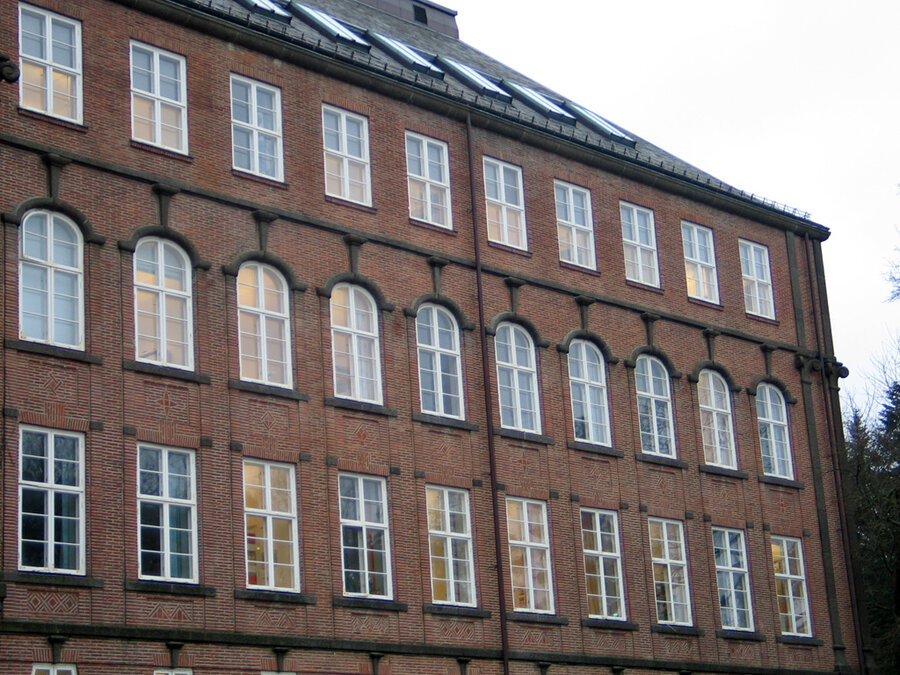
In the field between the second and third floor, slightly profiled, flat pilasters are built between the window axes. The parapet fields are shaped like mirrors where the masonry represents a series of geometrically shaped symbols such as crosses and rhombuses. In the upper part of the facade, the brick surface is smooth.
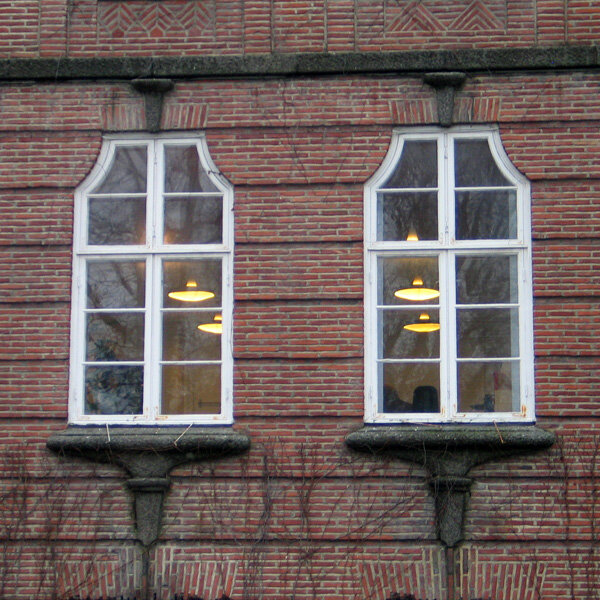
The windows are mostly two-frame transom windows. In the first floor, the windows are “5-rustic-band” high and have concave upper corners. The height is retained in the second and third floors, but here the windows have a low arch covering. In the fourth floor, the windows are lower and rectangular.
Entrance
The risalite is the part of the building where the lines and elements of the facades run together and concentrate. The windbreak is relatively modest and does not compete with the more grand entrance of the Urbygningen. However, the entrance door with its two wings, with a high arched glass field above, has an exciting and rich decoration.
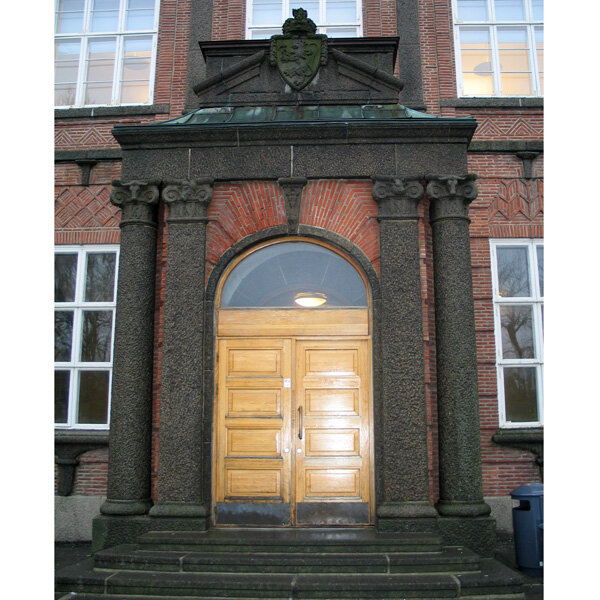
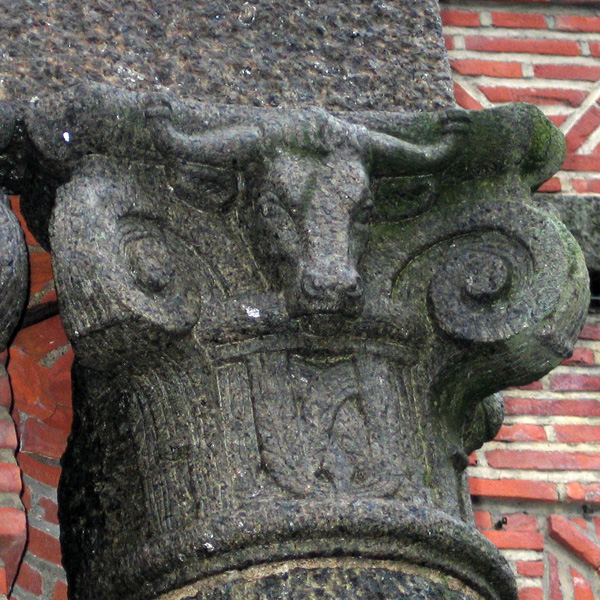
The door is flanked by a pilaster and columns on each side. Both pilasters and columns are in larvikite, they have classic capital profiles with animal heads placed in between carved ranks (volutes). The animal theme is more discreet here than in Urbygningen. The bearing elements lift a strong architrave, which in the middle is supported by the door arch’s keystone with an hourglass profile. In the wall surface above the door, the masonry shifts radiate radially from the arch center. From the cornice above the architrave, an elegant curved copper roof surface leads up to a gable field with the coat of arms.
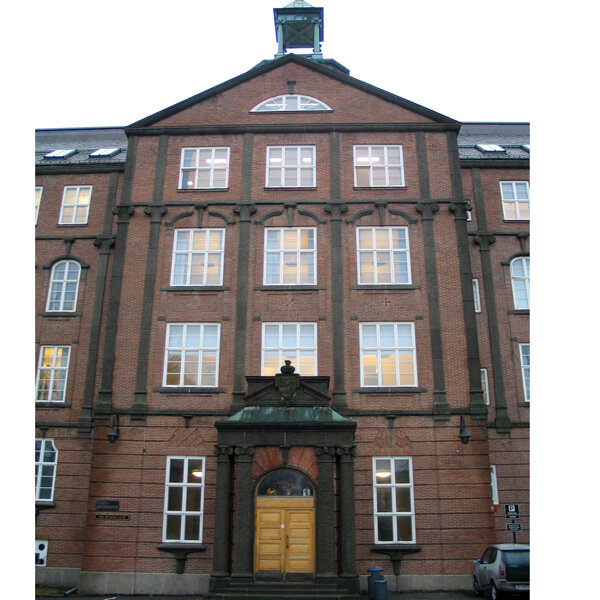
Large window surfaces above testify to the lecture halls on the inside, in the tympanum field the classical form elements appear again. The keystone in the low window points upwards in a symbolic way.
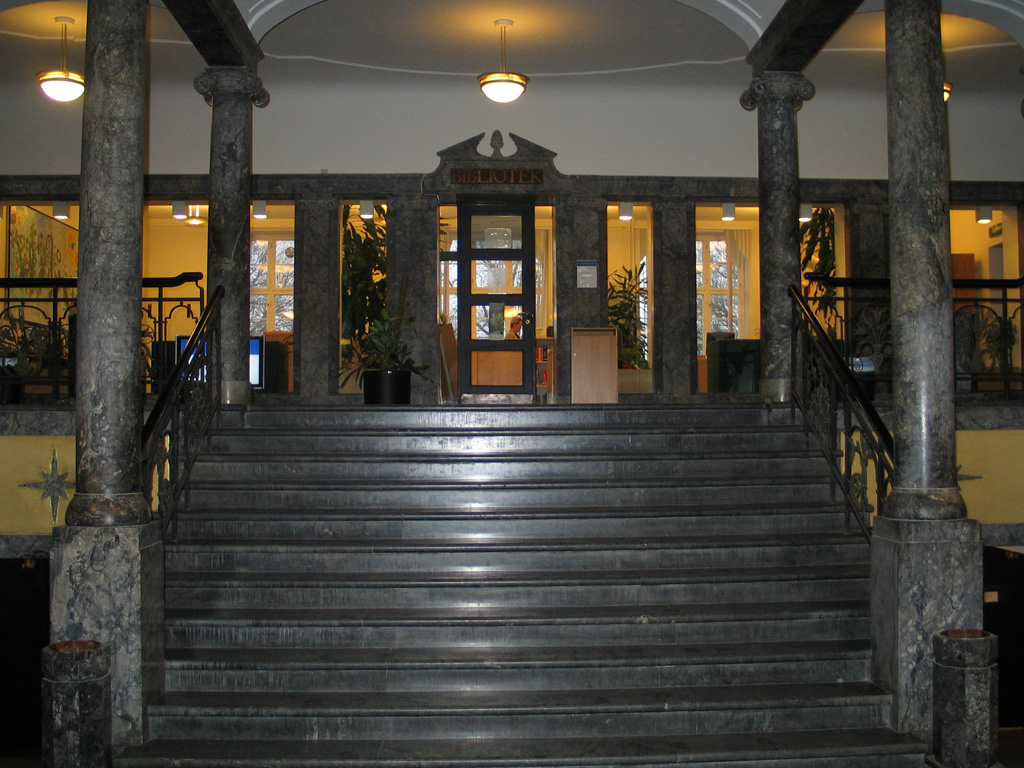
Inside
Inside the entrance door, one is met by a room with great ceiling height. The floor is in black marble and surrounded by light walls with pilasters, columns and architraves as structural elements. A wide monumental staircase flanked by columns and architraves leads half a floor up to the inner vestibule/library. The massive wall in the vestibule has today been replaced with glass, which makes the room even more open and grand.
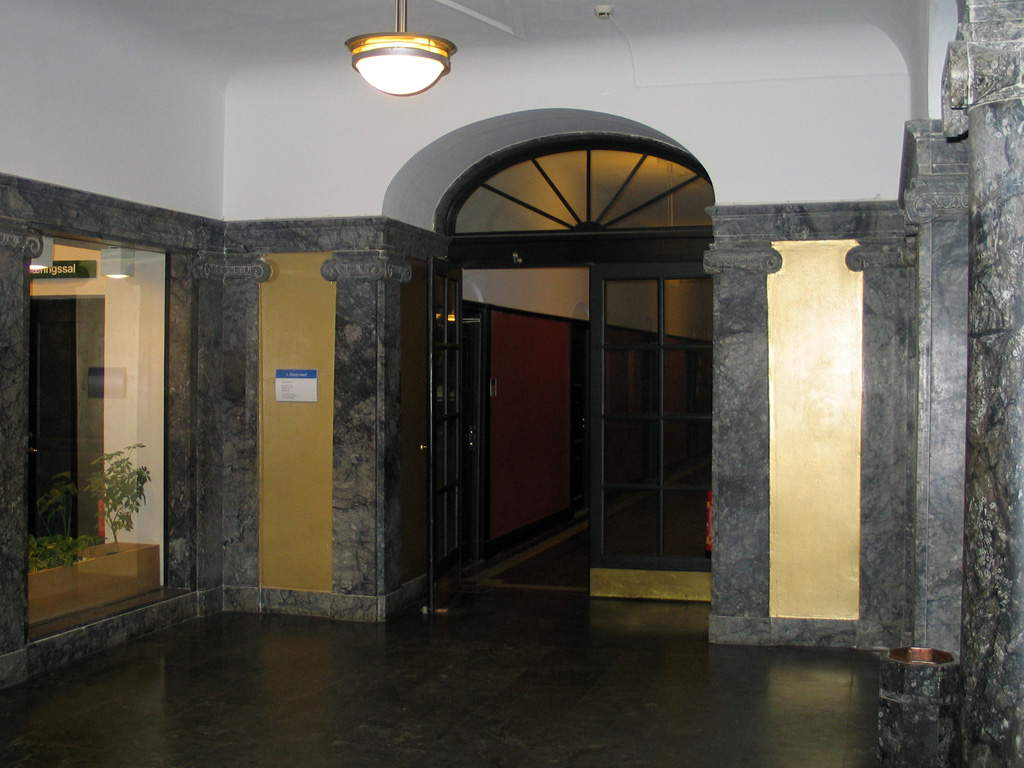
In the corridors, there is a wainscot in strong red, but with light walls. The floor has tiles in a herringbone pattern. There are reserve staircases at the ends as in the previous buildings. While the main entrance leads to two elevators.
The tower
The tower that rises above the roof riders was used in surveying education. Above the low windows, slender columns carry an elegantly curved helmet roof with a high spire at the top.
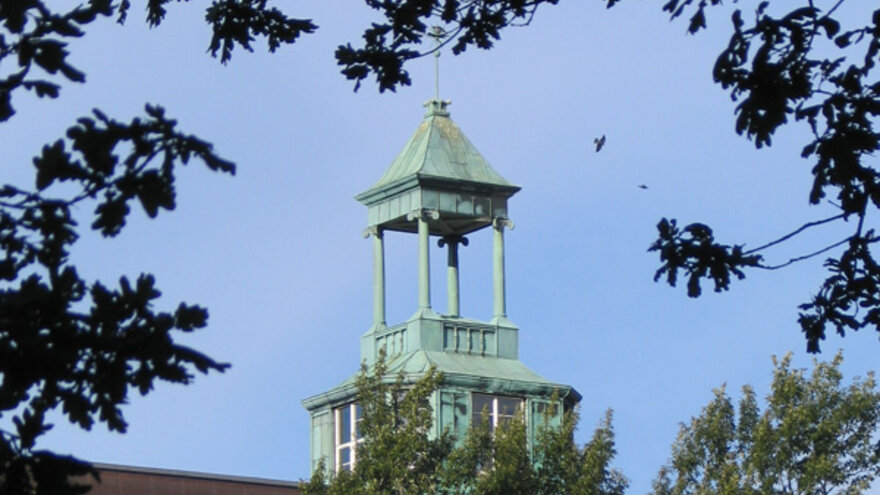
Style
The first classicism period was from 1750-1850. The architecture was inspired by both antiquity and the Renaissance, especially Andrea Palladio’s buildings.”
In the Nordic countries, we saw a resurgence of neoclassicism in the period after the First World War, also called The 20s classicism. This lasted until around year 1930, when it was replaced by functionalism. Neoclassicism in architecture is expressed in a reintroduction of classical motifs such as columns, pilasters, and temple gables.
One example of the Norwegian Neoclassisicm is The Deichmanske bibliotek (The Deichmanske library in Oslo).
Tårnbygningen has features from the twenties’ neoclassical architecture.
Information sourced from the books ”Bygninger ved Norges landbrukshøgskole tegnet av Ole Sverre” written by Erik Aas jr. i 1996 and NLHs anniversary books.
